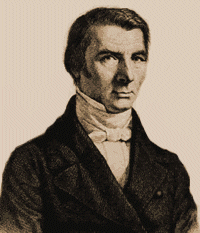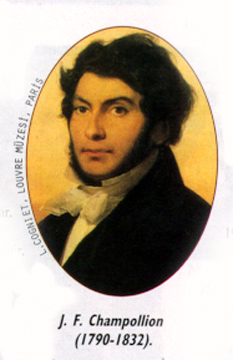Juan Domingo Perón (
October 8,
1895 –
July 1,
1974) was an
Argentine general and
politician, elected three times as
President of Argentina and serving from
1946 to
1955 and from
1973 to
1974.
Perón and his second wife
Eva were immensely popular among a portion of the Argentine people and still considered iconic figures by followers of the
Peronist Party. Perón followers lauded his efforts to eliminate
poverty and to dignify labor, while his detractors considered him a
demagogue and a
dictator. He started the political movement known as
Peronism, still popular in Argentina to this day, which professes to be a
third way between
capitalism and
socialism.
Military government of 1943-1946 Perón leveraged his popular support into victory in the
February 24,
1946 presidential elections.
Once in office, Perón pursued social policies aimed at empowering the working class. He greatly expanded the number of unionized workers, and helped establish the powerful
General Confederation of Labour (CGT), created in 1930. He called this the "third position", between capitalism and communism. Perón also pushed hard to industrialize the country; in 1947 he announced the first
five-year plan to boost newly nationalized industries.
Peronism became a central influence in Argentine political parties, and Perón continued to exert a strong influence after the 1955
military uprising which forced him into exile.
Among the upper class Argentines, the improvement of the laborers' situation was a source of resentment; negative feelings abounded towards the new industrial workers from rural areas, who had formerly been treated as servants. It was common for better-off Argentines to refer to these workers using racist slurs like
"black heads" (cabecitas negras, the name of a like bird),
"fats" ("grasas"),
"un-shirted" ("descamisados", conveying the idea that they "took off their jackets and/or shirts"), and the
radical deputy
Ernesto Sammartino said that the people who vote for Perón were a "
zoological flood" ("aluvión zoológico").
In 1951, Perón announced that the
Huemul Project would produce nuclear fusion before any other country. In charge of the project was a swindling Austrian of German origin,
Ronald Richter, who had been recommended by Kurt Tank who was expecting to power his aircraft with Richter's invention. Perón announced that the energy produced by Richter would be delivered in milk-bottle sized containers. Success of the project was announced in 1951, but no proof was shown. On 1952 Perón appointed a scientific team to investigate Richter's activities. The reports by
José Antonio Balseiro, and Mario Báncora revealed that the project was a fraud. After that, the assets of the Huemul Project were transferred to the Centro Atómico Bariloche (CAB) of the Argentine
National Atomic Energy Commission (CNEA) and to the physics institute of the
Universidad Nacional de Cuyo which was later named
Instituto Balseiro (IB).
Election as president and first term (1946-1952) Further information: Ratlines (history) After World War II, Argentina became a leading haven for Nazi war criminals, with the explicit protection of Juan Perón. Historian
Uki Goñi showed in his 1998 book that along with Nazis and French and Belgian
collaborationists, including
Pierre Daye, Peron organized a meeting in the
Casa Rosada during which a network was created, which benefitted from support by the Immigration Service and diplomatic civil servants. The Swiss Chief of Police Heinrich Rothmund
[1] and the Croatian Roman Catholic priest
Krunoslav Draganović also helped organize the
ratline Uki Goñi places particular emphasis on the part played by the government of Juan Perón in organizing the ratlines, as well as documenting the aid of Swiss and Vatican authorities in their flight. The Argentine consulate in
Barcelona handed out false passports to fleeing Nazi war criminals and collaborationists.
Protection of Nazi war criminals Perón won re-election in 1951. During his second term Perón's administration faced serious economic problems. Perón called employers and unions to a Productivity Congress with the aim of regulating social conflict through social dialogue, but the congress failed and a deal was not possible.
At the same time Perón signed a contract with an American oil company,
Standard Oil of California, on May 1955, opening an economic policy of development with the help of foreign industrial investments. The radical party leader,
Arturo Frondizi, considered it to be an anti-patriotic decision, but three years later he himself signed several contracts with foreign oil companies.
During the second term several terrorist acts were committed against civilian targets. On
April 15,
1953, a terrorist group detonated two bombs in a public rally at
Plaza de Mayo, killing 7 citizens and injuring 95. On
June 15,
1955, a failed coup d'état by anti-Peronists used navy aircraft to bomb Peronists at
Plaza de Mayo, killing 364 citizens. This barbaric act is considered a prelude to the
dirty war in Argentina between 1976 and 1983.
In 1954, the
Roman Catholic Church, which supported Perón's government up to that year, confronted Perón because of the enactment of the divorce law, among other reasons. Following the expulsion of two Catholic priests from the country, Peron was excommunicated from the Church by the Pope in
1955. On
September 16,
1955, a nationalist Catholic group of both the Army and Navy, led by General
Eduardo Lonardi, General
Pedro E. Aramburu and Admiral
Isaac Rojas, took power in a coup which they named
Revolución Libertadora (the "Liberating Revolution"). The military regime accused Peronist leaders of corruption, but no one was prosecuted.
The second term (1952-1955) After the military coup, Perón went into
exile in
Paraguay. His escape was facilitated by his friend President
Alfredo Stroessner of Paraguay, who placed a gunboat at his disposal in the Río de la Plata (river). Later he lived in
Panama, where he met nightclub bolero singer
María Estela Martínez (aka Isabel Perón). Eventually settling in
Madrid in
Franquist Spain he married her there in 1961. Back in Argentina, Peronism was banned and Peronists were persecuted. In 1963, the Aramburu decree made illegal the simple naming of Juan Perón.
In Argentina, the 1950s and 1960s were marked by frequent
coups d'état in addition to low economic growth in the 1950s and some of the highest growth rates in the world in the 1960s (Gerchunoff et al, 309-321). Argentina also faced problems of continued social and labour demands. During those years poverty highly decreased, with rates between 2% and 5% .
Finally, several members of the right-wing
Tacuara Nationalist Movement, considered as the first Argentine guerrilla group, turned towards him. Founded in the beginning of the 1960s, the Tacuaras were a fascist, anti-Semitic and anti-conformist group founded on the model of
Primo de Rivera's
Falange, who at first strongly opposed Peronism. However, they split after the 1959
Cuban Revolution into three main different groups. Opposed to the alliance with Peronism, Catholic priest Meinvielle retained the original ideological, and anti-Peronist, hard-line stance.
Dardo Cabo, to the contrary, founded the
Movimiento Nueva Argentina (MNA, Movement New Argentina), officially launched on June 9, 1961, in commemoration of General
Juan José Valle's Peronist uprising in 1956. The MNA became the ancestor of all modern Catholic nationalist groups in Argentina. Finally,
Joe Baxter and
José Luis Nell decided to join the Peronism movement, believing in its revolutionary capacities. They created the
Movimiento Nacionalista Revolucionario Tacuara (MNRT, Revolutionary Nationalist Tacuara Movement) which, without forsaking nationalism, cut away from the Church, the right-wing and anti-Semitism. Baxter's MNRT became progressively more left-wing and attracted by Marxism. Many of the
Montoneros and of the
ERP's leaders would come from this party.
Exile (1955-1973) On
March 11,
1973, general elections were held. Perón was banned from running, but a stand-in candidate,
Héctor Cámpora,a left-wing Peronist and his personal secretary, was elected and took office on
May 25. On
June 20,
1973, Perón returned from Spain to end an 18-year exile. A crowd of left-wing Peronists (estimated at 3.5 million) had gathered at the Ezeiza airport in Buenos Aires to welcome and support him. Perón came accompanied by Cámpora, whose first measure had been to grant
amnesty to all
political prisoners and to reestablish relations with Cuba, helping
Castro break the
US embargo. This, and his social policies, had also earned him the opposition of the right-wing Peronists, including the trade-unionist bureaucracy.
From Perón's tribune, camouflaged snipers, including members of the
Argentine Anti-Communist Alliance (aka Triple A), opened fire on the crowd. The left-wing Peronist Youth and the
Montoneros had been trapped. At least 13 people were killed (who have been identified), and 365 injured during this episode, which became known as the
Ezeiza massacre.
Cámpora resigned in July 1973, paving the way for new elections, this time with Perón's participation. Argentina had by this time reached a peak of instability, and Perón was viewed by many as the country's only hope for prosperity and salvation.
UCR's leader
Ricardo Balbín and Perón considered a Peronist-Radical joint government, but internal opposition in both parties made this impossible. Perón's overwhelming victory (62% of the vote), returned him to the presidency. In October 1973 he began his third term, with
Isabel, his wife, as Vice President.
Perón's third term was marked by an escalating conflict between the Peronist left- and right-wing factions. This turmoil was fueled primarily by Perón's growing ties with conservative Radical Party leader Ricardo Balbín, who the opposition led by
Raúl Alfonsín considered a right-wing radical. The Montoneros began to become marginalized in the Peronist movement, mocked by Perón himself after the June 20, 1973 Ezeiza massacre. Another guerrilla group, the Guevarist ERP, also opposed itself to the Peronist right-wing, and started engaging itself in
armed struggle, trying to create a
foco in the province of
Tucuman, the smallest province of Argentina located in the Northwest. Meanwhile,
José Lopez Rega, personal secretary of Juan Perón and then of Isabel Perón, began targeting left-wing opponents.
Perón died of a heart attack on
July 1,
1974 recommending that his wife, Isabel, rely on Balbín for support. At the president's burial Balbín uttered a historic phrase, "This old adversary bids farewell to a friend".
Isabel Perón succeeded her husband to the presidency, but proved thoroughly incapable of managing the country's mounting political and economic problems, the left-wing insurgency and the reaction of the extreme right. Ignoring her late husband's advice, Isabel granted Balbín no role in her new government, instead granting broad powers to López Rega, who started engaging in a "
dirty war" against political opponents.
Isabel Perón's term was ended abruptly on
March 24,
1976 by a military coup d'état. A
military junta, headed by
General Jorge Videla took control of the country, starting the self-styled
National Reorganization Process. The junta combined a widespread persecution of political dissidents with the use of
state terrorism. The final death toll rose to thousands (no less than 9,000, with human rights organizations claiming it was closer to 30,000). Most of this number is accounted for by "the
disappeared" (
desaparecidos), people kidnapped and executed without trial and without record.
The third term (1973-1974) Perón was buried in
La Chacarita Cemetery in
Buenos Aires. In
1987, his tomb was defaced, and the hands (and some personal effects, such as his sword) of his
corpse were stolen. Those responsible have never been found, but some say it was the responsibility of Licio Gelli, leader of the P2
Propaganda Due Italian Freemasonic lodge.
 Footnotes History of Argentina Peronism
Footnotes History of Argentina Peronism











 Biography
Biography Views
Views Notes
Notes
 is this year's rate of inflation that was expected last year; and p is this year's actual rate of inflation:
is this year's rate of inflation that was expected last year; and p is this year's actual rate of inflation:

 Please help improve the introduction to meet Wikipedia's layout standards. You can discuss the issue on the talk page.
Please help improve the introduction to meet Wikipedia's layout standards. You can discuss the issue on the talk page.
 Footnotes
Footnotes